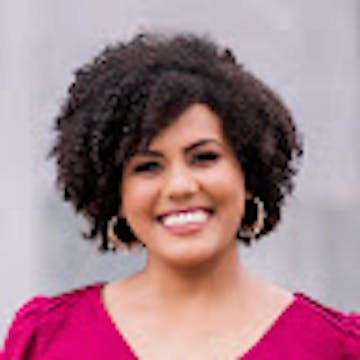Skip to content
 Pick any topic area to focus on and have everyone add their 1 to 11 star vision.Clear the board, then ask each board member join the game.After everyone has finished writing, take turns reading out loud your ideas. As each board member presents their spectrum (1-11 stars), the rest of the board marks the “sweet spots” — the experiences that are both delightful and feasible — that the company should consider implementing.
Pick any topic area to focus on and have everyone add their 1 to 11 star vision.Clear the board, then ask each board member join the game.After everyone has finished writing, take turns reading out loud your ideas. As each board member presents their spectrum (1-11 stars), the rest of the board marks the “sweet spots” — the experiences that are both delightful and feasible — that the company should consider implementing.
 Polly Rose
Polly Rose










 Buck Dubois
Buck Dubois Mary Jones
Mary Jones
Reid’s Rituals of Great Boards: the 8 strategic tools used by top companies
 11-Star Experience
11-Star Experience
Inspired by Airbnb: Design mind-blowing experience for your customers.
Airbnb’s CEO and Co-founder, Brian Chesky, is famous for an exercise called the 11-Star Experience. The goal is to take a part of your user experience and extrapolate it to the extreme in both directions. What would the worst experience look like? What would the most magical experience look like?
I talked through this with him on Masters of Scale, which you can listen to here:
In the episode, Brian describes a colorful sequence of potential Airbnb experiences, ranging from “1 star” to “11 stars”.
Stars
Airbnb Example
Stars
Airbnb Example
1
You get to your Airbnb and no one’s there. You knock on the door. They don’t open.
2
...
3
They don’t open at first, you have to wait 20 minutes, they finally let you in.
4
...
5
You knock on the door, they open the door, they let you in. Great. That’s not a big deal. You’re not going to tell every friend about it. You might say, “I used Airbnb. It worked.”
6
You knock on the door, the host opens. “Hey, I’m Reid. Welcome to my house.”
You would show them around. On the table would be a welcome gift. It would be a bottle of wine, maybe some candy. You’d open the fridge. There’s water. You go to the bathroom, there’s toiletries. The whole thing is great. That’s a six-star experience.
You’d say, “Wow, I love this more than a hotel. I’m definitely going to use Airbnb again. It worked. Better than I expected.”
7
You knock on the door. Reid Hoffman opens. Get in. “Welcome. Here’s my full kitchen. I know you like surfing. There’s a surfboard waiting for you. I’ve booked lessons for you. It’s going to be an amazing experience. By the way, here’s my car. You can use my car. And I also want to surprise you. There’s this best restaurant in the city of San Francisco. I got you a table there.”
And you’re like, “Whoa. This is way beyond.”
8
...
9
...
10
A ten-star check-in would be the Beatles check-in in 1964. I’d get off the plane and there’d be 5,000 high-school kids cheering my name with cards welcoming me to the country. I’d get to the front yard of your house and there’d be a press conference for me, and it would be just a mindf**k experience.
11
I would show up at the airport and you’d be there with Elon Musk and you’re saying, “You’re going to space.”
There are no rows in this table
As he explained:
“The point of the the process is that maybe nine, 10, 11 are not feasible. But if you go through the crazy exercise, there’s some sweet spot between “they showed up and they opened the door” and “I went to space.” That’s the sweet spot. You have to almost design the extreme to come backwards. Suddenly, doesn’t knowing my preferences and having a surfboard in the house seem not crazy but reasonable? It’s actually kind of crazy logistically, but this is the kind of stuff that creates a great experience.”
The best boards are cheerleaders
This exercise applies to more than just the product experience. The best boards are the CEO’s biggest cheerleaders. They inspire the company to stretch the limits of what’s possible and set (Big Hairy Audacious Goals).
I was recently reminded about a moment several years ago when LinkedIn set a goal to hit $50m in annual revenue. One of the board members, David Sze, encouraged Jeff Weiner (LinkedIn’s then-CEO) to create a plan to hit $300m in revenue 3 years out, and then work backwards. According to David, “Jeff looked at me like I had four eyes, but the exercised forced the company to think big.” This exercise didn’t change the company’s revenue goals for the upcoming year — $50m was still the target. But it shifted it from the ultimate destination to a stepping stone of a much greater outcome.
A ritual for crafting an 11-star experience
This is a fun exercise for boards to participate in. Ask your board to imagine the most expansive blue-sky, 11-star version of a strategic direction. It’s an invitation to think big. I think you’ll be surprised at the both the creativity and practical ideas that emerge from the exercise. And the more diverse your board is, the more variety of thought will emerge.
Join the game
Clear board
Prompt: Checking in to an Airbnb (example)
Who
Stars
Describe the experience
Sweet spot
Who
Stars
Describe the experience
Sweet spot

1
Description of a 1-star experience...
2
Description of a 2-star experience...
3
Description of a 3-star experience...
4
...
5
...
6
...
7
...
8
...
9
...
10
...
11
...

Back to:
Want to print your doc?
This is not the way.
This is not the way.

Try clicking the ⋯ next to your doc name or using a keyboard shortcut (
CtrlP
) instead.